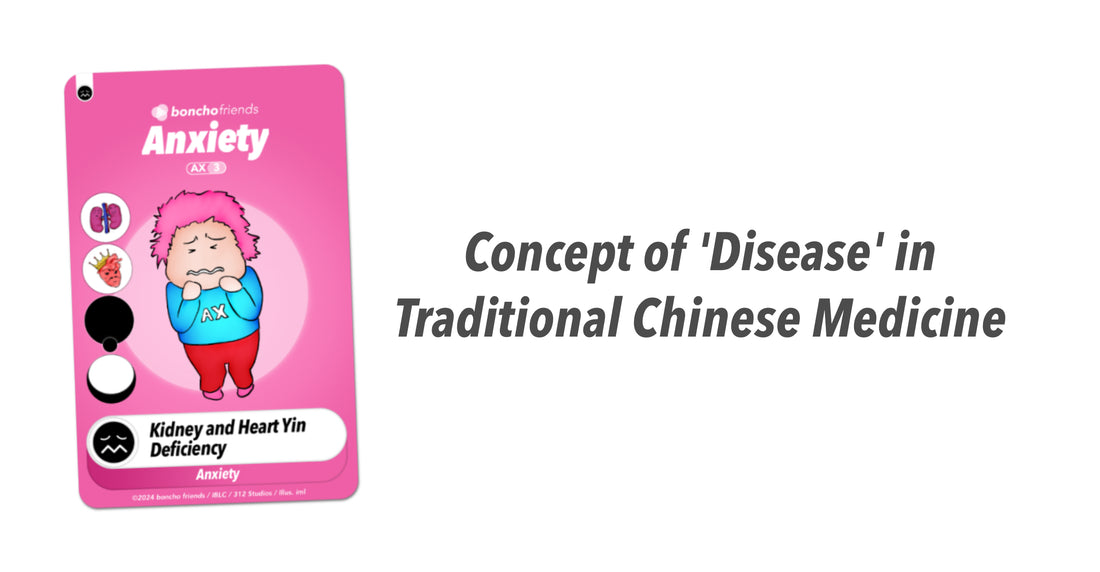
The concept of 'disease' in Traditional Chinese Medicine (TCM)
Share
Hi friends! Today, let's delve into the concept of 'disease' in Traditional Chinese Medicine (TCM) and how patterns are identified.
In TCM, the notion of 'disease' differs from that of Western medicine. In Chinese medicine, a 'disease' equates to what would be considered a 'symptom' in Western medicine. For instance, in gynecology, 'Painful Periods' is categorized as a disease, whereas in Western medicine, it's regarded as a symptom, with efforts directed towards identifying an underlying 'disease' such as endometriosis causing the symptom of painful periods. Other examples of 'diseases' in TCM include Diarrhea, Constipation, Cough, Breathlessness, Dizziness, Headaches, Epigastric Pain, Abdominal Pain, and more. These are all symptoms rather than distinct 'diseases' in Western medicine.
However, it's entirely possible to apply Chinese-style pattern differentiation to Western medical diseases, as many modern Chinese medicine books demonstrate. For instance, the Western medical disease of 'coronary heart disease' broadly corresponds to 'Chest Painful Obstruction Syndrome' (Chest Bi) in Chinese medicine. By analyzing patterns displayed by patients with coronary heart disease, common patterns can be identified. With the extensive hospital infrastructure in China and the widespread use of Chinese medicine, modern Chinese doctors can effectively apply Chinese pattern differentiation to Western medical diseases.
Similarly, diseases like endometriosis can be approached using Chinese medicine principles. While painful periods are the chief symptom of endometriosis, a Chinese disease classification of 'Painful Periods' can guide treatment. Yet, analyzing patterns displayed by women with endometriosis can lead to a Chinese pattern differentiation specific to this condition, enhancing treatment effectiveness.
The ancient roots of the concept of 'disease' in Chinese medicine can be traced back to texts like the 'Yellow Emperor's Classic of Internal Medicine.' These texts discuss various ailments, including Manic-Depression, Painful Obstruction Syndrome (Bi), Cough, and others.
While there's some correspondence between Chinese and Western diseases, it's essential to note that there's never a direct one-to-one correspondence between them. For example, the Chinese disease "Epigastric Pain" may correspond to Western digestive diseases such as gastric ulcer, but many people may experience epigastric pain without having a gastric ulcer.
In Chinese medicine, the same disease may manifest with different patterns, and the same pattern may give rise to many different diseases. This principle ensures that each patient is treated individually, with no standard treatment for any specific disease. For example, the disease of 'Anxiety' may manifest with various patterns like Heart and Gallbladder Deficiency, Kidney and Heart Yin Deficiency, and Heart Blood Deficiency, each requiring a tailored treatment approach.



Identifying patterns in TCM follows the typical Chinese natural philosophy, emphasizing relationships over causes. Each symptom and sign has meaning only in relation to others, allowing for nuanced pattern identification. For instance, a dry tongue with a feeling of heat in the evening, accompanied by other symptoms, may indicate Yin deficiency, while the absence of thirst and other signs may suggest Yang deficiency.
Overall, understanding patterns in Chinese medicine involves blending diagnosis, pathology, and treatment principles. Various methods, such as identification according to the Eight Principles, Qi, Blood, and Body Fluids, Internal Organs, pathogenic factors, Six Stages, 12 Channels, Eight Extraordinary Vessels, and Five Elements, contribute to comprehensive pattern identification and effective treatment strategies in TCM.
Identification methods:
- Identification according to the Eight Principles
- Identification according to Qi, Blood, and Body Fluids
- Identification according to the Internal Organs
- Identification according to pathogenic factors
- Identification according to the Six Stages
- Identification according to the 12 Channels
- Identification according to the Eight Extraordinary Vessels
- Identification according to the Five Elements
